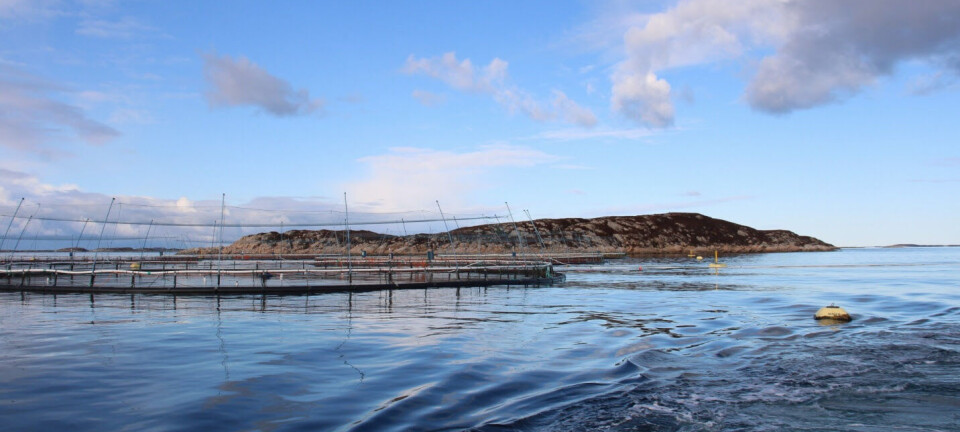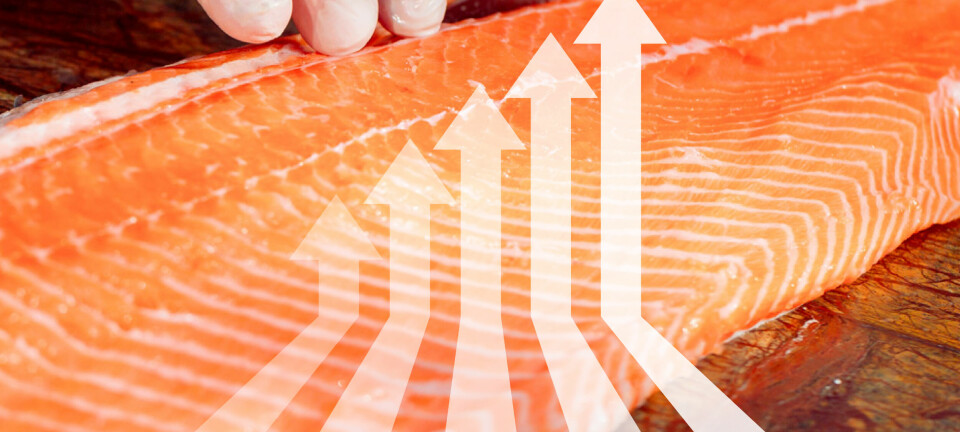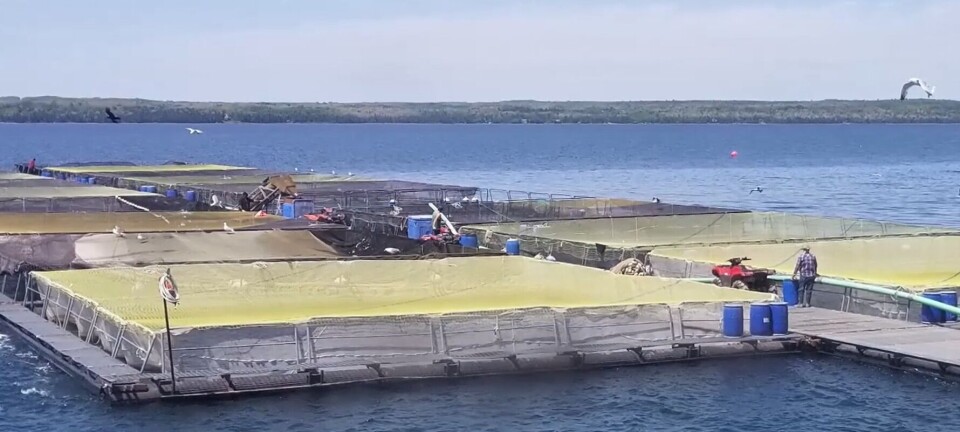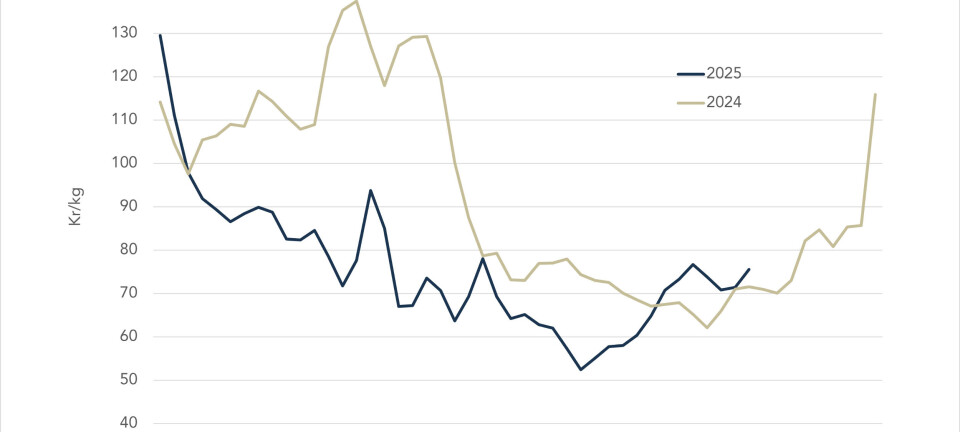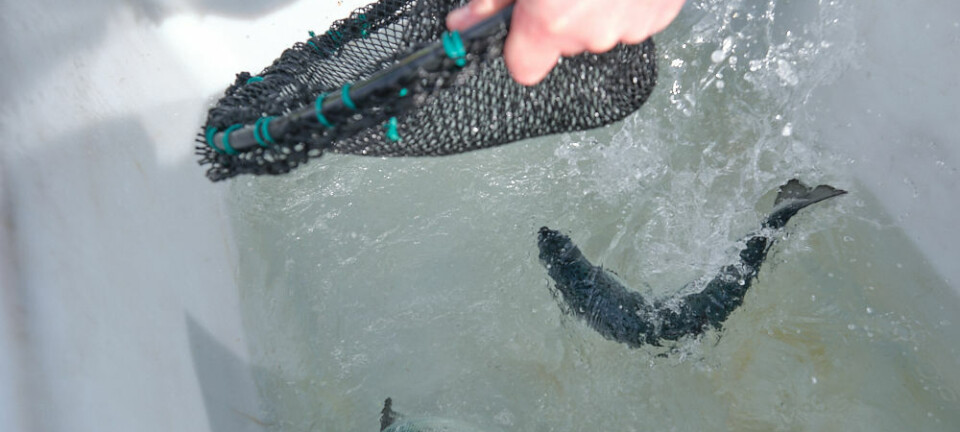
These lice like deep water
Findings by researchers in Norway indicate that offspring from lice that have lived in submerged cages do better at depth
In recent years, it has become more common in Norway to have fish farms where the cages are lowered to a depth of between 20 and 60 metres.
“The goal is to keep farmed salmon and rainbow trout away from the larvae of the salmon lice,” says Frode Oppedal, a scientist with Norway’s Institute of Marine Research (IMR).
Basically, he says, the older lice stay on the fish, while the infectious lice larvae float around with the current in the upper water bodies before finding a host.
“As you go deeper, the pressure also increases. Previous experiments have shown that most lice larvae move up the water column when the pressure increases.”
At the same time, researchers have documented that some lice families have a tendency to sink further downwards. At some facilities, lice have also been observed on farmed salmon in submerged cages.
Some lice like the deep
This led the researchers to wonder why some lice larvae reside in deeper environments than previously known. Now the first part of the research has been completed, and the results are clear.

“The results show that if the submerged fish get lice, and these have offspring, a larger proportion of the offspring will remain at depth compared to lice larvae that hatch on fish in surface facilities,” says Oppedal.
In addition to some lice settling into the depths, local conditions where the farm is located can also play a role.
“In some areas we see that downward currents or inversion of water masses can occur. This can transport the infectious salmon lice larvae down to the fish, which basically swim deeper than the lice prefer.
“For example, a storm can lead to turbulent conditions on the surface, and periods of bad weather and upheaval in the water masses can drive the lice larvae deeper than where they usually are.”
When they can then encounter farmed fish in submerged cages at depth, they also find hosts on which they can live for the rest of their lives.
Tested lice from deep farms
The project was carried out at the Matre Research Station as part of a PhD project by Lowri O'Neill from Deakin University in Melbourne. Oppedal was one of the supervisors for the work.
“We collected adult lice from two different submerged commercial facilities and compared them with lice from conventional surface facilities,” says O'Neill.
Lice are infectious to salmon at a specific stage of their life: when they are copepodite larvae. At that stage, they are about 0.4 mm in size and drift with the water current, but they can actively swim up or passively sink down. The researchers grew lice to this stage, and then conducted tests to see where in the water column they chose to be.
“We used long, transparent pipes that stood on end, where the lice larvae were exposed to the same pressure as at a depth of 10 metres,” she says.
Lice were allowed to choose
The goal was to see how the lice were distributed in the pipes. Some pipes had lice larvae that were the offspring of “surface lice” and others of “deep lice”. This allowed the researchers to compare the behaviour between the two groups.
After the louse larvae were transferred to the tubes, they were kept in the dark without pressure for 15 minutes. Then the pressure was increased for five minutes, before the researchers immediately observed where they were located in the water column.
“Five minutes is long enough for the louse larvae to have found the desired location in the water column. From earlier, before deep-water farming, we know that most of them will respond to increased pressure by swimming upwards and staying there,” she says.
Now the results were a little different.
“Approximately 35% of louse larvae at the copepodite stage prefer to swim upwards, but when we now looked at louse offspring from the depths, we found that only 23% swam upwards,” she says.
Correspondingly, only 19% of the normal lice sank, while 27% of the offspring from the deep lice sank.
Must clarify if it is hereditary
It's too early to say for sure what these results will mean for deep farming. But this is the first time researchers have seen that the behaviour of louse larvae is influenced by their parents’ growing environment.
“The results give us an indication that the adaptation may be hereditary. We will look into this further in the next experiment.”
If this turns out to be the case, it will be important to take this into account, for example when combining different technologies on fish farms in an area.
“[That way] the long-term negative consequences overall will be the least possible,” says Oppedal.














